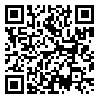Volume 3, Issue 2 (2022)
2022, 3(2): 115-130 |
Back to browse issues page
Download citation:
BibTeX | RIS | EndNote | Medlars | ProCite | Reference Manager | RefWorks
Send citation to:



BibTeX | RIS | EndNote | Medlars | ProCite | Reference Manager | RefWorks
Send citation to:
Nejad ebrahimi A, ghobadi P. Analysis of Qazvin Urban Space Organization in the Safavid period with the approach of cultural studies. Urban Design Discourse a Review of Contemporary Litreatures and Theories 2022; 3 (2) :115-130
URL: http://udd.modares.ac.ir/article-40-62188-en.html
URL: http://udd.modares.ac.ir/article-40-62188-en.html
1- Tabriz Islamic Art University , Ahadebrahimi@tabriziau.ac.ir
2- Tabriz Islamic Art University
2- Tabriz Islamic Art University
Abstract: (1886 Views)
Aims: The purpose of this article is to address the issue of Qazvin Space Organization in the Safavid period with the approach of cultural studies.
Methods: The present study has been carried out with the approach of cultural studies and exploratory-documentary method, with the aim of describing and interpreting the historical data of Qazvin city in the Safavid period and its analysis. In this regard, first-hand sources, documents were collected, studied and analyzed. In parallel with the library studies, field surveys were conducted and the signs were surveyed and studied.
Findings: In the present study, three views result from the approach of cultural studies, namely: 1- Regulation of the city- 2- Homogeneity and heterogeneity of neighborhoods and 3- Use of urban spaces and their rational concepts in the analysis of Qazvin spatial organization used during the Safavid capital it placed. The result of the research indicates that the structural changes of Qazvin city in the Safavid period in accordance with the newly created culture and is closely related to a set of several factors, including the "space" dimension which is a subset. It regulates the city, it plays a more prominent role, and because it is expressed through the body and by the designers, it is more tangible, and the other dimensions are related to it.
Conclusion: The "space" originated from the power of the government at that time in the city of Qazvin and the royal complex was not just an urban design but a tool to achieve political, economic and religious goals and the city's culture is based on the same structure. Has appeared.
Methods: The present study has been carried out with the approach of cultural studies and exploratory-documentary method, with the aim of describing and interpreting the historical data of Qazvin city in the Safavid period and its analysis. In this regard, first-hand sources, documents were collected, studied and analyzed. In parallel with the library studies, field surveys were conducted and the signs were surveyed and studied.
Findings: In the present study, three views result from the approach of cultural studies, namely: 1- Regulation of the city- 2- Homogeneity and heterogeneity of neighborhoods and 3- Use of urban spaces and their rational concepts in the analysis of Qazvin spatial organization used during the Safavid capital it placed. The result of the research indicates that the structural changes of Qazvin city in the Safavid period in accordance with the newly created culture and is closely related to a set of several factors, including the "space" dimension which is a subset. It regulates the city, it plays a more prominent role, and because it is expressed through the body and by the designers, it is more tangible, and the other dimensions are related to it.
Conclusion: The "space" originated from the power of the government at that time in the city of Qazvin and the royal complex was not just an urban design but a tool to achieve political, economic and religious goals and the city's culture is based on the same structure. Has appeared.
Article Type: Original Research |
Subject:
Culture and Identity in the City
Received: 2022/06/12 | Accepted: 2022/09/3 | Published: 2022/09/1
Received: 2022/06/12 | Accepted: 2022/09/3 | Published: 2022/09/1
Send email to the article author
| Rights and permissions | |
 |
This work is licensed under a Creative Commons Attribution-NonCommercial 4.0 International License. |







